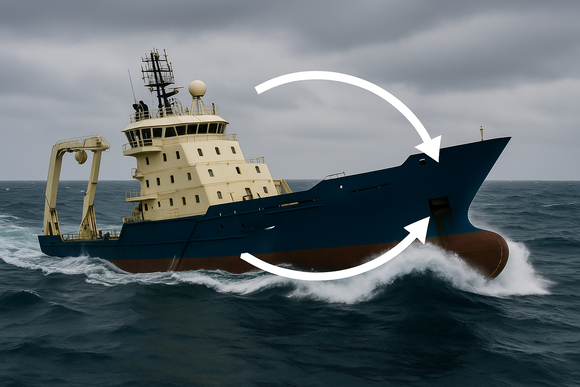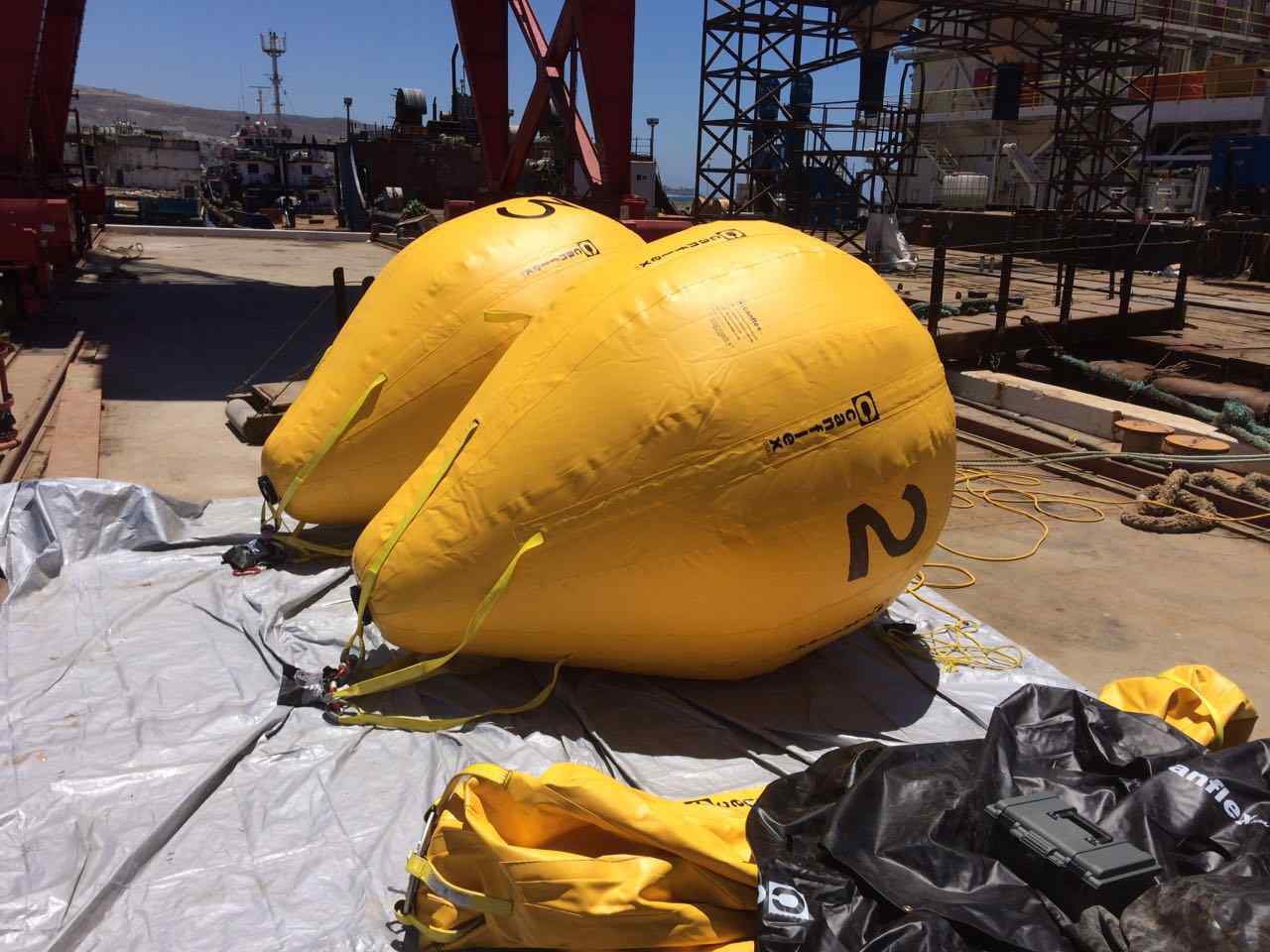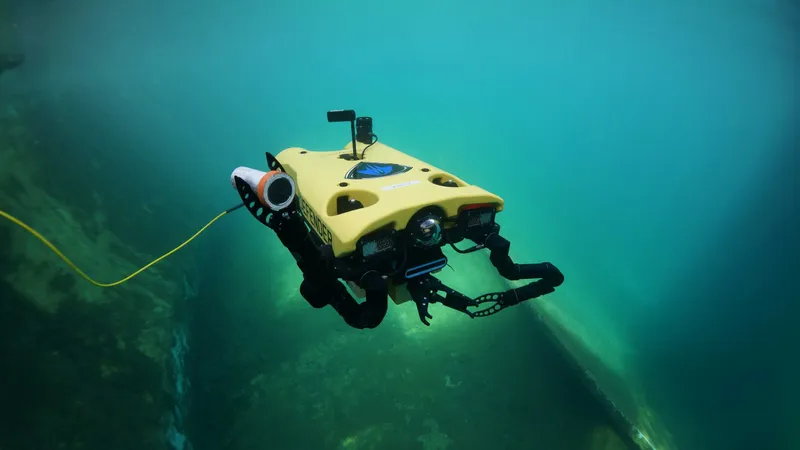Maritime personnel and passengers operate in uniquely challenging environments where vessel motion directly impairs both cognitive and physical abilities, as well as overall comfort. Extensive research provides compelling evidence of these effects.
McCauley Research

Even mild motion sickness, which doesn’t cause vomiting but creates discomfort, significantly impairs maritime personnel cognitive performance. Matsangas and McCauley’s research documented alarming performance declines in symptomatic operators:
- 31.7% reduction in memory task performance
- 14.7% decline in arithmetic capabilities
- 9.43% overall decrease in composite cognitive task scores
These impairments occur even when motion sickness symptoms are mild and not incapacitating. The study notes: “Multitasking cognitive performance declined even when motion sickness and soporific symptoms were mild. The results also show an order effect.” This means performance degradation worsens over time during operations.
Royal Navy Research
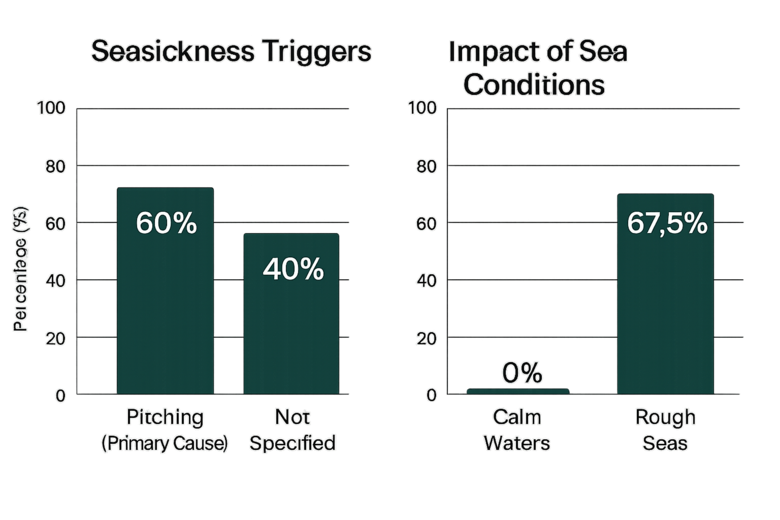
A comprehensive Royal Navy study investigating seasickness among naval personnel revealed striking insights.
Seasickness Triggers
The research, conducted during sea-keeping trials aboard HMS GURKHA and HMS HERMIONE, identified ship pitching motion (forward-backward rocking) as the predominant trigger for seasickness, significantly more problematic than rolling (side-to-side), yawing (horizontal rotation), or heaving (up-down) movements. Specifically, 42% of all sailors surveyed singled out pitching as the primary motion causing their symptoms. This group represented approximately 60% of those who experienced any form of seasickness.
Impact of Sea Conditions
The research clearly demonstrated how dramatically sea conditions affect personnel regardless of their experience level or position.
Sea conditions
- In calm waters very few sailors reported seasickness symptoms
- In rough seas 65-70% of all personnel experienced some degree of seasickness
Perhaps most concerning for operational readiness, approximately half of all sailors reported difficulty continuing their assigned duties during these episodes.
PubMed Questionaire Study

Prolonged exposure to vessel motion causes sopite syndrome - a condition characterised by drowsiness, fatigue, and reduced alertness. A 2015 cross-sectional questionnaire study published on PubMed surveyed 250 oceanographers over a three-month period. A comprehensive study found that 91.7% of women and 80.8% of men reported experiencing seasickness. Among women, 68.1% experienced symptoms occasionally and 23.6% on every voyage. For men, 69.5% reported occasional symptoms, while 11.3% experienced them on every voyage.
The effects of this motion sickness went far beyond mere discomfort. According to the study, 60% of the workers believed seasickness directly influenced the success of their missions. This impact manifested through affected mood (50%), deteriorated interpersonal relationships (23%), and-most concerningly-increased risk of accidents involving falls, machinery, or laboratory equipment (40%).
For maritime personnel who must maintain intense concentration and vigilance during 12-hour shifts, sopite syndrome creates a dangerous degradation in operational awareness and responsiveness.
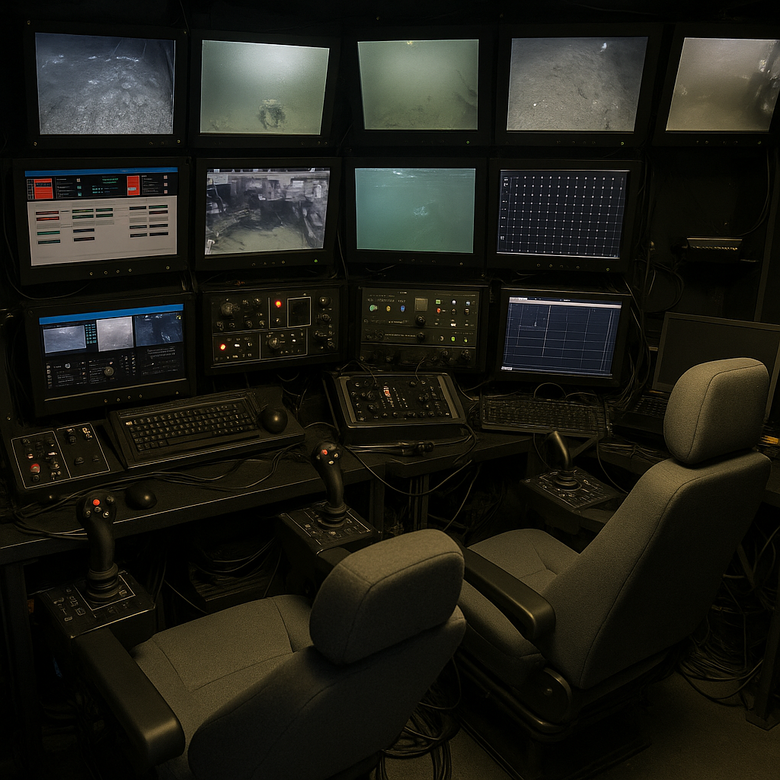
One of the solutions is a gyro stabilised chair.
Gyro Stabilised Chair
A gyro-stabilised chair isolates users from vessel motion. Gyro stabilisers are mounted in such a way that the force that disturbs the axis of orientation of the flywheel is (mainly) the force caused by rolling. When a vessel rolls due to wave motion, the on-board gyroscope responds by generating forces that oppose these movements.
This video, whilst edited, demonstrates how this gyro-stabilised chair works.
Here’s a detailed explanation of how this technology works to isolate pilots from the constant motion that compromises their cognitive abilities and operational effectiveness.
Flywheel
At the heart of a gyro-stabilised chair is the physics of gyroscopic stabilisation. The chair incorporates one or more high-speed flywheels that spin continuously inside sealed vacuum chambers mounted within the chair’s base. These flywheels create substantial angular momentum-essentially a resistance to any change in their orientation.
The flywheel assembly works on these fundamental principles:
- The spinning flywheel creates a large kinetic moment (angular momentum)
- When the vessel experiences motion that would disturb the chair, this creates a torque on the spinning flywheel
- Through gyro-dynamics, this torque is redirected 90 degrees from the direction of the applied force
- This redirection generates a counteracting force opposing the original motion
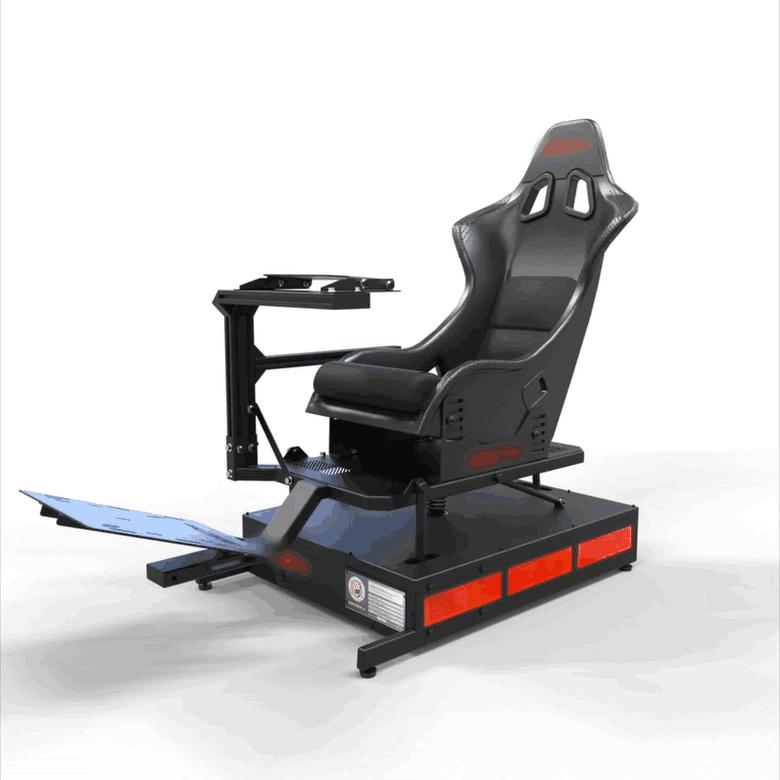
Motion Compensation Mechanics
The chair actively counteracts the three primary types of vessel motion that affect maritime personnel:
Roll Compensation (side-to-side motion).
When the vessel rolls, sensors detect this motion and the gyroscopic system generates an opposing torque. The flywheel is mounted so that its precession axis runs athwartships (across the beam of the vessel), allowing it to create forces that directly counter roll motion.
Pitch Compensation (forward-backward motion).
Similar to roll compensation, but with the precession axis oriented fore-to-aft. As the vessel pitches, the gyroscope precesses to create stabilising torque in the opposite direction.
Heave Compensation (up-down motion).
Unlike roll and pitch, heave requires a different approach. The chair employs hydraulic or electromechanical actuators that physically raise or lower the seat in real-time to counter the vessel’s vertical motion.
Unlike vessel-wide stabilisation systems, the gyro-stabilised chair only needs to stabilise the mass of the user and control console - a much more manageable task than stabilising an entire vessel. This allows for a more compact design that can fit in standard control rooms.
The system requires only minimal user intervention. When engaged, the chair automatically activates when vessel motion exceeds programmed thresholds, allowing user to focus entirely on their operations without distraction.
By isolating users from vessel motion, these stabilised chairs helps maintain cognitive function throughout long shifts, significantly reducing incidents of sopite syndrome and the associated fatigue.

